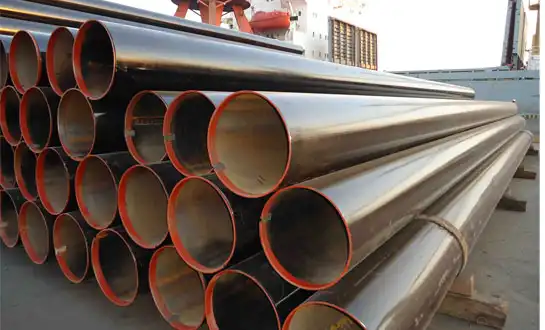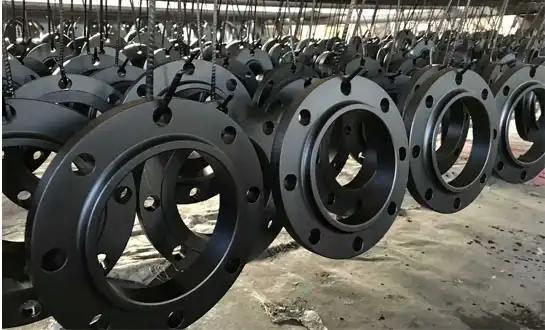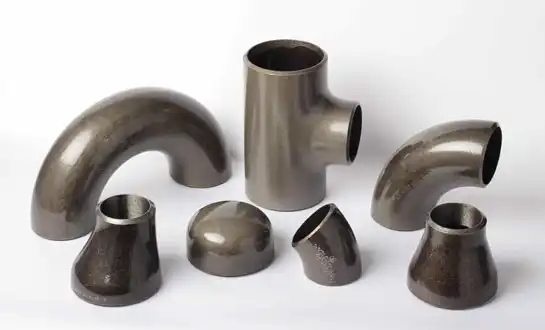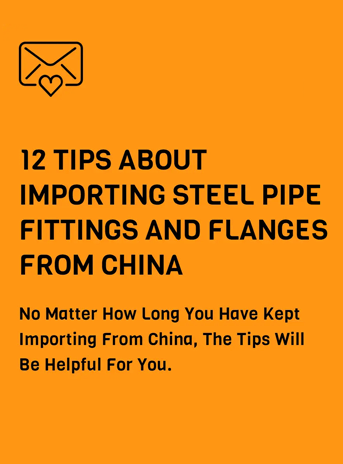Proper component selection, high-quality installation, and continuous maintenance are essential for ensuring leak-free connections in high-pressure piping factory. Flange and gasket specifications, surface preparation, bolt tightening, and inspection programs must all be followed precisely for the project to be successful. If operators follow these steps, their high-pressure piping systems will be much more reliable and safe, and they will also save maintenance costs and downtime.
How to Ensure Leak-Free Connections in High-Pressure Piping?
A significant engineering difficulty that directly affects operational safety, environmental preservation, and economic efficiency across a wide range of industrial sectors is making sure that high-pressure piping systems have leak-free connections. To avoid expensive leaks that can cause production shutdowns, equipment damage, or catastrophic failures, high-pressure piping applications—which include everything from petrochemical refineries to power generating facilities—need careful consideration when choosing components, installing them, and performing maintenance. Solid knowledge of material metallurgy, bolt tensioning methods, gasket compatibility, surface preparation requirements, and flange selection is essential for dependable sealing performance. From the first design considerations through long-term operational monitoring to guarantee system integrity throughout the service life of the piping infrastructure, this guide helps industry professionals establish and maintain leak-free connections in demanding high-pressure environments. It offers technical insights and practical strategies for this process.
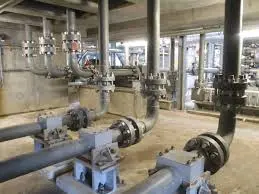
Selecting Appropriate Components for High-Pressure Piping Systems
Flange Selection and Pressure Rating Considerations
Selecting the correct flange type and pressure rating forms the foundation of leak-free connections in high-pressure piping systems. The flange class designation must exceed the maximum anticipated operating pressure with adequate safety margins to accommodate pressure surges and thermal expansion effects. For high-pressure piping applications, raised face flanges, ring type joint flanges, and tongue-and-groove configurations each offer distinct advantages depending on specific service conditions. RTJ flanges provide superior sealing capabilities through metal-to-metal contact, making them ideal for pressures exceeding 1500 psi. Material selection for flanges in high-pressure piping must account for both mechanical strength requirements and chemical compatibility with process fluids, with carbon steel ASTM A105 suitable for many applications while alloy steels or stainless grades become necessary in corrosive or high-temperature environments. The flange facing finish significantly influences sealing performance, with surface roughness specifications typically ranging from 125 to 250 micro-inches for optimal gasket seating. Engineers specifying flanges for high-pressure piping should always reference current ASME B16.5 or B16.47 standards to ensure components meet applicable pressure-temperature ratings and dimensional requirements for the intended service conditions.
Gasket Material Selection and Compatibility
Gasket selection represents one of the most critical decisions affecting leak prevention in high-pressure piping connections. The gasket material must withstand the combined effects of internal pressure, operating temperature, chemical exposure, and mechanical loading without degradation or loss of sealing capability. Spiral wound gaskets with graphite or PTFE filler materials offer excellent resilience and recovery characteristics for high-pressure piping applications involving thermal cycling, accommodating flange rotation and differential thermal expansion. Metal ring gaskets including oval and octagonal profiles provide robust sealing solutions for extreme pressure conditions where softer gasket materials cannot maintain adequate sealing force. The gasket's compressibility, recovery, and creep resistance characteristics must match the specific operating conditions to prevent relaxation that gradually reduces sealing pressure over time. Chemical compatibility between gasket materials and process fluids is essential, as chemical attack can cause swelling, hardening, or degradation that compromises seal integrity in high-pressure piping systems. Temperature cycling in high-pressure piping requires gaskets with minimal coefficient of thermal expansion mismatch relative to flange materials to prevent loosening during cooldown or excessive compression during heat-up phases.
Bolt and Fastener Specifications
Bolting components in high-pressure piping connections must deliver sufficient clamping force to compress gaskets adequately while maintaining structural integrity under sustained loading and thermal cycling. Bolt material selection typically specifies high-strength alloy steels such as ASTM A193 Grade B7 for ambient to elevated temperature service. The bolt diameter, length, and thread engagement must provide adequate tensile strength to generate and maintain the required gasket seating stress throughout the operating cycle. Calculating proper bolt loads for high-pressure piping involves determining the hydrostatic end force from internal pressure, adding gasket seating forces, and incorporating safety factors to account for bolt relaxation and gasket creep. Thread lubrication significantly affects the relationship between applied torque and resulting bolt tension, with proper lubricants reducing friction and enabling more uniform load distribution. Bolting procedures for high-pressure piping connections typically specify multi-pass tightening sequences using calibrated torque wrenches or hydraulic tensioning equipment to achieve target stress levels.
Installation Best Practices for Leak-Free High-Pressure Connections
Surface Preparation and Flange Facing Inspection
Proper surface preparation of flange faces is essential for achieving leak-free seals in high-pressure piping systems. Any surface defects including scratches, pitting, corrosion, or embedded foreign materials create leak paths that prevent gaskets from forming continuous sealing contact. Visual inspection of flange faces should identify obvious damage, warpage, or distortion that requires correction before assembly. Surface finish measurements using profilometers verify that roughness values fall within specifications, typically 125 to 250 micro-inches for most high-pressure piping applications. Cleaning flange surfaces removes oils, greases, old gasket residue, and contaminants that interfere with gasket seating. For high-pressure piping with RTJ flanges, the groove dimensions including width, depth, and radius must precisely match the specified ring gasket to ensure proper seating and prevent ring rotation during pressurization. Surface defects in high-pressure piping flanges may require machining to restore proper geometry, with portable facing machines enabling on-site corrections without removing components from the line.
Gasket Installation and Alignment Techniques
Correct gasket installation practices prevent many common causes of leaks in high-pressure piping connections. The gasket must be centered on the flange face with uniform overhang around the entire circumference, preventing partial coverage that creates uncompressed areas vulnerable to leakage. For spiral wound gaskets in high-pressure piping, the compression stop or inner ring prevents over-compression that could damage the gasket structure. Ring gaskets for RTJ flanges require careful seating in their grooves, ensuring the ring sits flat without gaps or tilting that would allow rotation during bolt-up. Installation in high-pressure piping should avoid lubricating gasket surfaces, as most sealant compounds can interfere with proper seating and potentially contaminate process fluids. Multiple gaskets should never be stacked at a single joint, as this practice introduces additional interfaces that compromise sealing reliability. New gaskets should always replace used gaskets during maintenance of high-pressure piping connections, as previously compressed gaskets lose resilience and conform imperfectly to flange surfaces upon reinstallation.
Bolt Tightening Procedures and Torque Sequences
Systematic bolt tightening using proper sequences and techniques ensures uniform gasket compression essential for leak-free high-pressure piping connections. The cross-pattern or star pattern tightening sequence alternates between opposite bolts, gradually applying load in multiple passes to distribute compression evenly around the gasket circumference. Multi-pass tightening for high-pressure piping typically involves four to six passes, with each pass applying 25-30 percent of the final target torque value. Calibrated torque wrenches provide consistent torque application, though torque-tension relationships vary significantly with thread condition, lubrication, and bolt material. Hydraulic bolt tensioners offer superior accuracy for critical high-pressure piping applications by directly stretching bolts to predetermined elongation values. Hot torquing procedures may be necessary for high-pressure piping operating at elevated temperatures, applying additional bolt tightening after initial heat-up to compensate for thermal expansion and gasket consolidation.
Maintenance and Monitoring Strategies for Long-Term Integrity
Routine Inspection and Leak Detection Methods
Systematic inspection programs identify potential leak paths before they develop into significant failures in high-pressure piping systems. Visual inspections during regular walkthroughs detect visible leaks, staining, corrosion products, or gasket extrusion indicating compromised joint integrity. Ultrasonic leak detection equipment identifies high-pressure gas leaks through characteristic acoustic signatures, enabling detection of small leaks invisible to conventional inspection methods. Thermal imaging cameras reveal temperature anomalies associated with leaking fluids in high-pressure piping. Pressure monitoring systems track system pressures continuously, with unexplained pressure drops suggesting leaks somewhere in the high-pressure piping network. Periodic pressure testing of high-pressure piping systems during planned shutdowns verifies joint integrity under controlled conditions, identifying marginal connections requiring attention before they fail during normal operations.
Preventive Maintenance and Re-Torquing Schedules
Proactive maintenance prevents leaks by addressing gasket relaxation and bolt loosening before they compromise high-pressure piping connections. Re-torquing schedules apply additional bolt tension to compensate for gasket creep, thermal cycling effects, and initial settling that occur during the first days or weeks of operation. Initial hot torquing within 24-48 hours after startup addresses gasket compression and thermal expansion effects in high-pressure piping operating at elevated temperatures. Periodic re-torquing at intervals determined by operating severity maintains gasket compression over the long term. Gasket replacement schedules based on service life experience prevent leaks from age-related degradation. Flange facing reconditioning during major turnarounds restores surface finish and flatness, addressing wear and corrosion that gradually degrades sealing surfaces in high-pressure piping systems.
Troubleshooting Common Leak Causes
Understanding typical failure modes helps diagnose and correct leaks in high-pressure piping systems. Gasket blowout results from insufficient bolt loading, improper gasket selection, or excessive internal pressure. Uneven gasket compression from warped flanges, improper bolt tightening sequences, or misaligned piping creates localized leak paths in high-pressure piping connections. Thermal cycling loosens bolts through differential expansion between bolting and flange materials, necessitating periodic re-torquing. Chemical attack degrades gasket materials, causing hardening, swelling, or dissolution that eliminates sealing capability in high-pressure piping handling aggressive fluids. Vibration-induced loosening of bolts gradually reduces gasket compression in high-pressure piping near rotating equipment. Correcting recurring leaks in high-pressure piping may require engineering changes including upgrading to higher pressure class flanges or switching to more robust gasket types.
Conclusion
HEBEI RAYOUNG PIPELINE: Your Trusted High-Pressure Piping Components Manufacturer and Supplier
When your high-pressure piping projects demand components that deliver unwavering reliability and leak-free performance, HEBEI RAYOUNG PIPELINE TECHNOLOGY CO., LTD stands as your committed industrial partner. Industrial pipe fittings from our extensive inventory include buttweld carbon steel pipe elbows, tees, reducers, and complete flange systems for safe connections at any pressure level. No matter the complexity of your high-pressure piping system's design—straight lines, intricate angles, or flexible joints—our product portfolio has you covered. We reliably supply local and worldwide high-pressure piping markets with materials that meet international requirements, supported by GOST-R and SGS certifications and ISO 9001:2015 quality management. At HEBEI RAYOUNG PIPELINE TECHNOLOGY CO., LTD., we believe that excellent infrastructure starts with dependable materials, and as leading pipes and fittings manufacturers, we supply high-quality steel pipes and fittings designed for long-term durability in demanding high-pressure piping applications. Contact our technical team today at info@hb-steel.com to discuss your high-pressure piping component requirements and discover how our expertise can eliminate leaks and enhance your system performance.
References
1. American Society of Mechanical Engineers. ASME B31.3: Process Piping - Design, Fabrication, and Erection. New York: ASME International, 2022.
2. Bickford, John H. An Introduction to the Design and Behavior of Bolted Joints, Fourth Edition. Boca Raton: CRC Press, 2008.
3. Nayyar, Mohinder L. Piping Handbook, Eighth Edition. New York: McGraw-Hill Education, 2019.
4. American Petroleum Institute. API 570: Piping Inspection Code - In-Service Inspection, Rating, Repair, and Alteration of Piping Systems. Washington DC: API Publishing, 2016.
5. Singh, Keshavan. Design of Piping Systems, Second Edition, Revised and Expanded. Hoboken: John Wiley & Sons, 2003.
6. Parisher, Roy A. and Rhea, Robert A. Pipe Drafting and Design, Third Edition. Boston: Gulf Professional Publishing, 2012.

Need a quote? Want to see samples? Just say hello. We’re friendly. We’re fast. And we’re ready when you are.
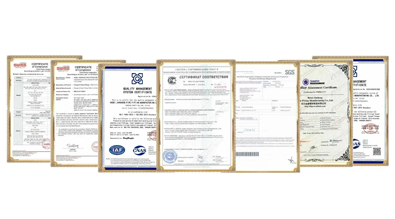
Welcome to RAYOUNG – Strong Pipes, Stronger Promise
